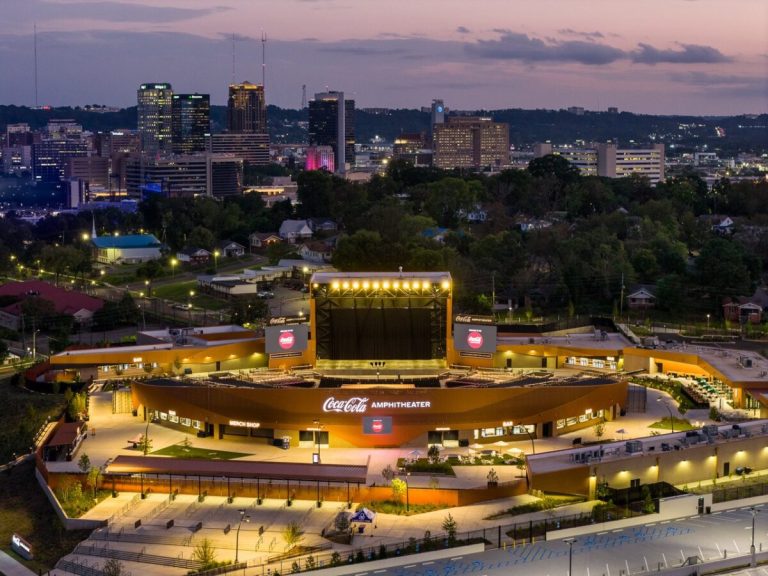Clean water, trails, parks, how Freshwater Land Trust transforms our community
Reading time: 6 minutes
Sponsored

Throughout 2021 Freshwater Land Trust (FLT) is celebrating its 25th Anniversary. Perhaps no organization has changed the landscape of Birmingham and Central Alabama for the better than Freshwater Land Trust. Here is their story.
A Guiding Principle

“In every deliberation, we must consider the impact of our decisions on the next seven generations.” ~ Great Law of the Iroquois Confederacy
It is said that Ben Franklin respected the Iroquois Confederacy form of government so much he used his influence to incorporate many of its guiding principles in the U.S. Constitution.
Likewise, Freshwater Land Trust has been a group led by visionaries. People thinking generations ahead.
How It Started
The organization began 25 years ago as part of a consent decree settling the massive Jefferson County sewer lawsuit, one the largest water pollution cases in U.S. history.
As part of the settlement, the land trust was established to administer a ten-year $30 million greenways program in Jefferson County to protect our community’s sensitive rivers and streams.
“It (Freshwater Land Trust) could have bought the property and gone away. Thanks to the visionary leadership of the board, and those early leaders, they realized they had an opportunity to really create a strong nonprofit that was needed in the Birmingham area. They took that $30 million and leveraged $50+ million dollars with conservation. Subsequently, the Freshwater Land Trust became the entity that has conserved so many of the green spaces that we now take for granted.” ~ Wendy Jackson, founding and former Executive Director of the Freshwater Land Trust
Generational Change

What kind of trails, parks, preserves, green spaces and projects are we talking about? Ones that have transformed our community for a generation. It is hard to imagine what our community would look like today without Freshwater Land Trust.

“I do not think anyone envisioned how important our organization would become to our area.” ~Rusha Smith, Executive Director
Here are a few of the highlights.
Red Mountain Park

With the help of FLT and the surrounding community, Birmingham added a park bigger than NYC’s Central Park. In 2007, thanks to one of the largest corporate land donations in U.S. history by U.S. Steel, Red Mountain Park continues to grow and during the pandemic, attendance increased dramatically to 20,000+ visitors a month.
Turkey Creek Nature Preserve

Home to one of the rarest fish on earth, the vermilion darter, Turkey Creek was slated to become a new jail for the county in the early 2000s. FLT facilitated the purchase of the property in Pinson by the state Forever Wild Program. Today, over 130,000 people (pre-pandemic) swim in the creek and ride down the falls every year. The Southern Environmental Center at Birmingham-Southern College and the Friends of Turkey Creek Nature Preserve also provide award winning environmental education programs.
Red Rock Trail System

A work in progress since 2010, the Red Rock Trail System has topped 125 miles since its inception. This past April, the Jones Valley Trail Extension, which connects the iconic Railroad Park to the Avondale neighborhood broke ground. Ambitious and community-led – in partnership with the Jefferson County Department of Health, the trails fostered by FLT promote healthy lifestyles. The paths have also led to economic development and local jobs.
Five Mile Creek Greenway

A greenway that will eventually extend over 35 miles through Central Alabama, connects the communities of Graysville, Brookside, Gardendale, Fultondale, Tarrant and Center Point. Once deemed one of the most polluted streams in the state, the greenway has helped improve the creek’s water quality, so much so, the regulators now say the water is good for fish and wildlife.
Seven Springs Nature Preserve

“Who knew such a tiny creature could bring so many people together.” ~ the late Bishop Heron Johnson, Faith Apolstolic Church
Marveling God’s creation, the Bishop, his church, FLT and many partners saved the watercress darter, another fish that is only found in the springs and streams of Jefferson County.
Litter Gitter

And to many people’s surprise, FLT works on more than preserving places. Over the past two years, through various partnerships throughout our community, the groups installed ten “Litter Gitters” in creeks and springs. These eco-friendly litter collection devices have removed over 9,000 pounds of trash from our urban streams.
8000 Acres Protected

In addition to FLT’s critical involvement with the formation of Red Mountain Park, Turkey Creek Nature Preserve, and Five Mile Creek Greenway to name a few, its reach has significantly expanded to include in total almost 8,000 current protected acres throughout central Alabama. Annually, the group adds between 500 to 1000 protected acres.

Safeguarding Our Natural World
“Freshwater Land Trust’s work affects everyone’s life in our community whether people realize it or not. We safeguard our natural world, and, in doing so, we are protecting our drinking water, our threatened and endangered species, and our unique plant life. We create safe and accessible places for people to enjoy outdoor recreational opportunities, and, in doing so, we are connecting our parks and greenways, providing alternative methods of transportation, and improving the mental and physical health of all of our citizens. All of these efforts make our region a more desirable place to live, work, and visit.” ~Rusha Smith, Executive Director
What’s Next? Are You a Freshwater Fan?

Want to be a part of a group that will make a lasting impact on everyone’s lives and the environment in Birmingham and Central Alabama for the next seven generations?
“FLT has already changed the landscape of the area around us, and there is so much more to come in the next generation.” ~Rusha Smith, Freshwater Land Trust Executive Director
Celebrate the Freshwater Land Trust’s 25th Anniversary by becoming a Freshwater Fan – its new membership program.
It’s easy. Sign up and contribute today.
Sponsored by:




